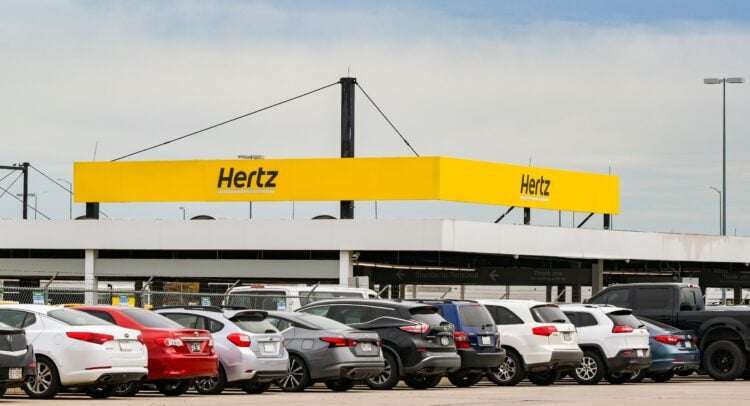The stock of Hertz (HTZ) is up 40% on Nov. 4 after the car rental company returned to profitability for the first time in two years.
Elevate Your Investing Strategy:
- Take advantage of TipRanks Premium at 50% off! Unlock powerful investing tools, advanced data, and expert analyst insights to help you invest with confidence.
HTZ stock is up 40% and trading at $6.88 per share on an otherwise down day for stocks. The huge move higher comes after Hertz reported earnings per share of $0.42 for this year’s third quarter. That crushed the Wall Street forecast that called for a profit of $0.03.
The result also marked the company’s return to profitability for the first time since 2023. The recovery was largely due to lower depreciation of the vehicle fleet that comprises Hertz’s rental cars. The company also announced revenue for this year’s third quarter of $2.48 billion, which topped the $2.39 billion consensus forecast of analysts.
Big Comeback
Also positive for Hertz was the company’s vehicle utilization rate, which improved two percentage points to 84% from a year ago. A higher utilization rate indicates more vehicles were rented by Hertz and were not sitting idle on its car lots producing no revenue for the company.
Hertz CEO Gil West described the latest quarter as a “strong result.” The company also ended the quarter with $2.2 billion in cash. Hertz filed for bankruptcy in May 2020 during the COVID-19 pandemic. Since then, HTZ has been frequently treated as a meme stock by investors who bid up the share price and then dump the security.
However, Hertz has been clawing its way back. In August, the company unveiled a strategic partnership with Amazon (AMZN) to sell its used vehicles over Amazon Autos, an online vehicle sales platform launched in 2024.
Is HTZ Stock a Buy?
The stock of Hertz has a consensus Moderate Sell rating among seven Wall Street analysts. That rating is based on three Hold and four Sell recommendations issued in the last three months. The average HTZ price target of $4.18 implies 39.16% downside from current levels. These ratings could change after the company’s financial results.

















